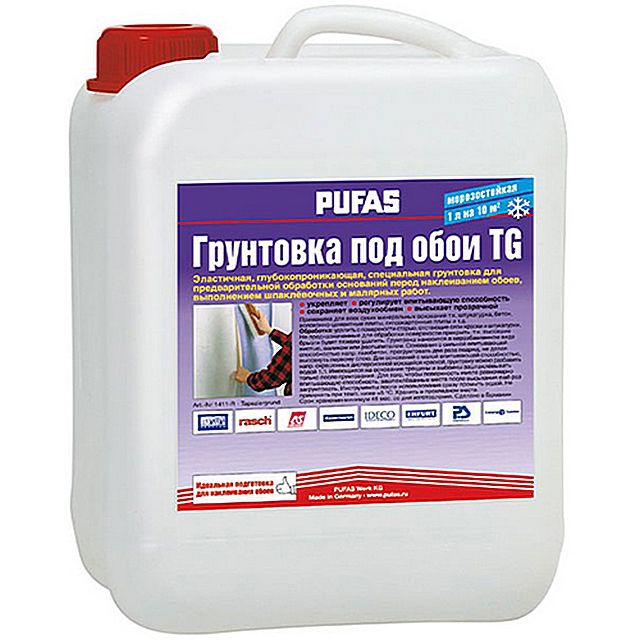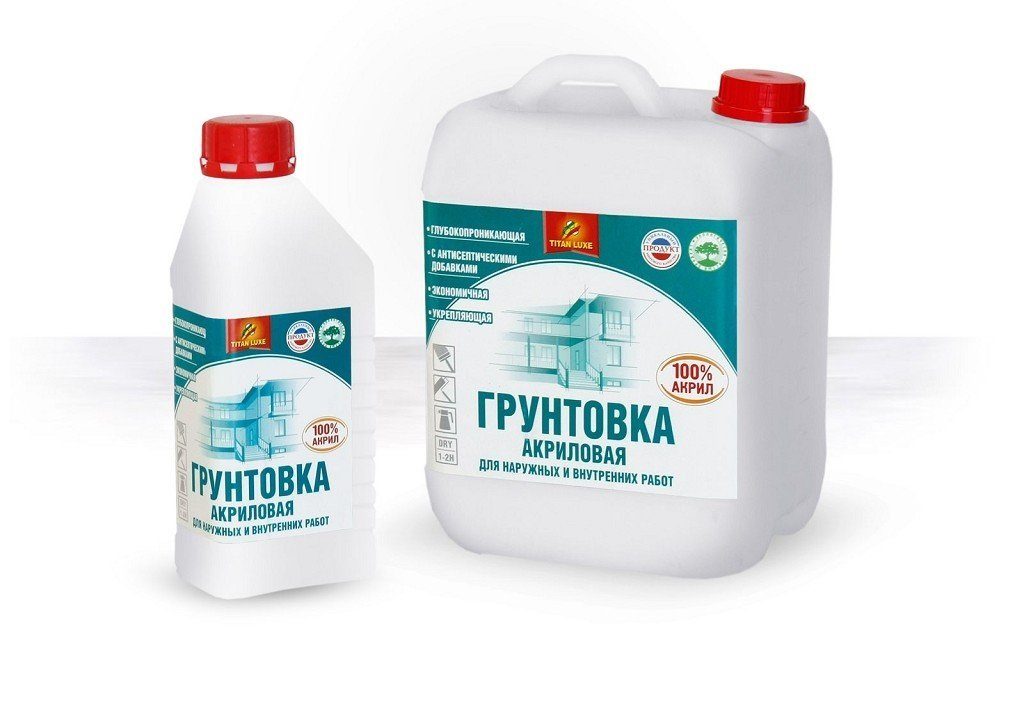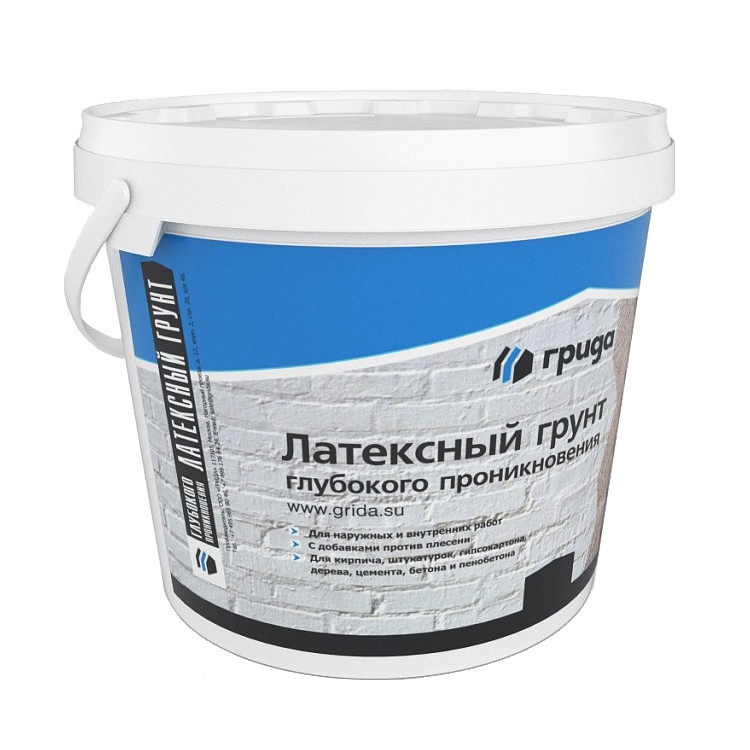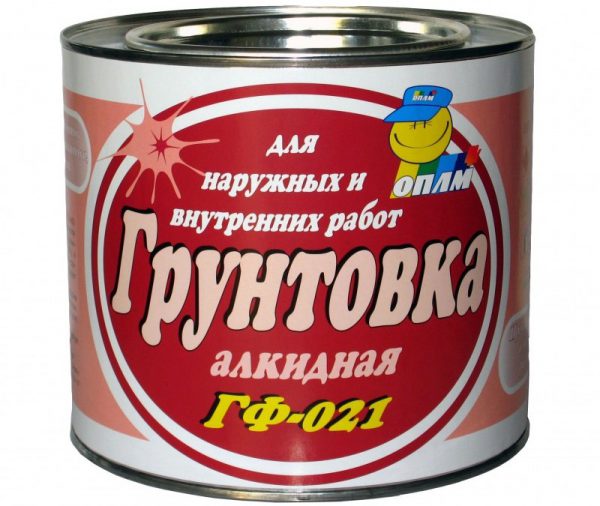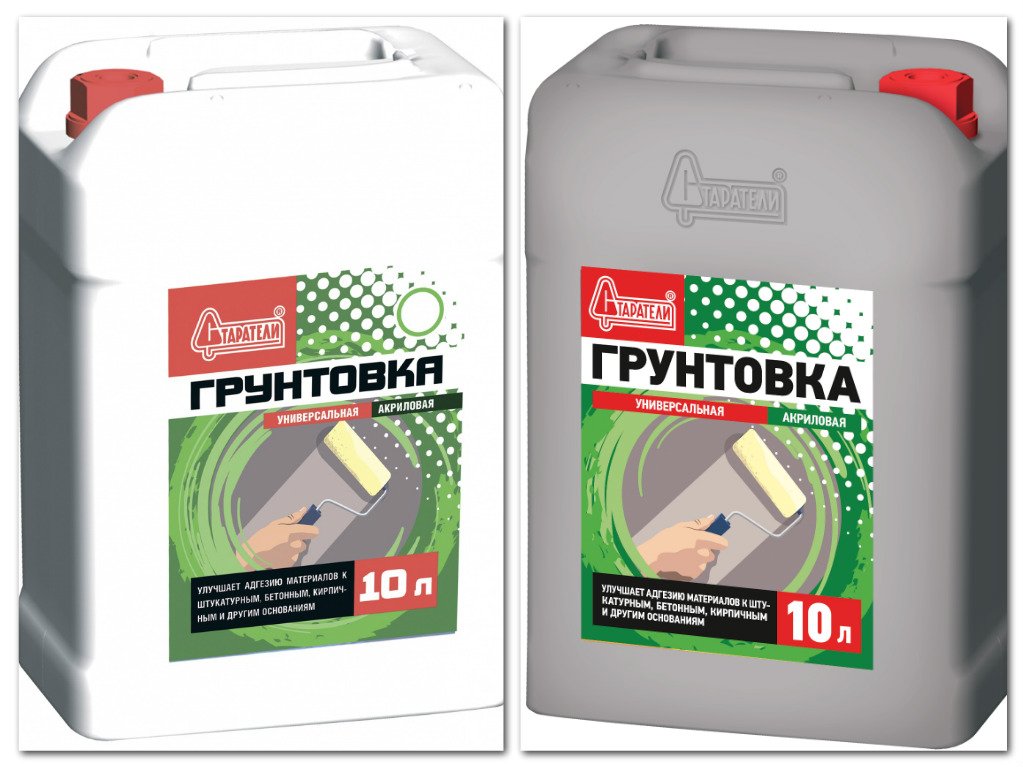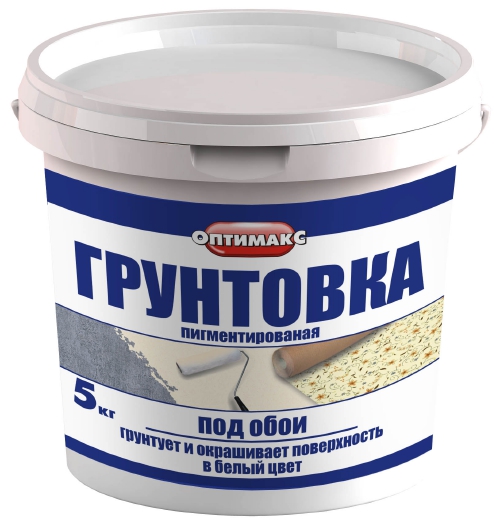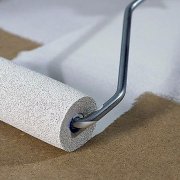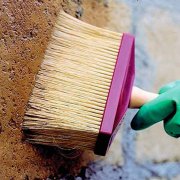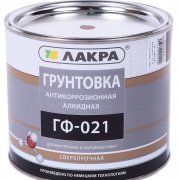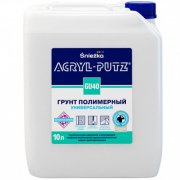Primer for wallpaper
Primer for wallpaper - the stage of preparation for the decoration of the room. The final result of the work depends on the quality of its implementation.
The content of the article
What is a primer?
Primer for wallpaper or primer is a special emulsion composition that ensures the quality of finish. For the manufacture of solvents, resins and drying oils are used. The primer does not have an unpleasant odor and is applied to the surface using a spray bottle, roller or brush. The choice of tool does not affect the quality of the primer.
The composition has various colors. The most common is a white primer for wallpaper, but there is also a colorless composition and a product of other tones, as shown in the photo. A soil laboratory, the equipment of which meets the latest technology, releases the composition in the form of a finished product, concentrated product or dry powder.
Why do we need a primer?
The primer is applied to the surface before wallpapering to level the building base and create a base for the glue.
The primer has the following properties:
- strengthens the surface due to deep penetration into the structure of the prepared material;
- fills microdamages;
- connects the remains of dirt and dust;
- disinfects the surface due to antiseptic particles present in the primer, which prevents the appearance of fungus and mold under the wallpaper;
- improves adhesion of glue of wall-paper and wall;
- prevents the passage of wallpaper even in the corners of the room;
- reduces adhesive consumption;
- makes the wall shade even, which is important when using light-colored wallpapers for pasting;
- masks small surface defects, therefore, after priming the wall, wallpapering does not cause problems;
- retains the ability of surfaces to pass air, which creates a favorable microclimate in the room.
Do I need a primer before painting the wallpaper?
Everyman often wonders if the wallpaper should be primed before painting. It is recommended here not to ignore this preparatory stage. Primed wallpapers are better painted. Color to go down exactly without the formation of stains. In addition, prepared wallpaper reduces the consumption of coloring materials.
As an alternative to primer and paint, you can use a special primer-paint. To paint the wallpaper, apply a coat of primer and 2 standing paints. Primer paint reduces the number of treatments. It requires the application of two layers. They include a primer with a shade of wallpaper and the final hardening of the tone.
Therefore, the answer to the question whether it is necessary to prime the wallpaper before painting, the answer will definitely be positive.
Primer classification
Before wallpapering, the primer is necessary, most importantly, choose the right kind of composition. There are several varieties of primer on the market, each of which has advantages and disadvantages.
Acrylic mixture
If we talk about how to choose a primer for wallpaper, then the acrylic composition is popular today. The increased demand for it is due to widespread, affordable cost and ease of use. Such a primer is sold at any specialized outlet.It is presented both in the form of the finished product, and in concentrated form (in this case, the primer composition can be easily prepared with your own hands by adding water to it). The average price is 60 rubles. The acrylic primer is applied to the surface with any suitable tool. The composition does not have a pungent odor, so the use of the product does not cause irritation of the upper respiratory tract.
When it comes to a product such as a primer for wallpaper, how long it dries is one of the most common questions, because the duration of its drying depends on when you can proceed to the next stage of work. Acrylic composition allows you to start gluing 2-3 hours after applying the primer.
Such a primer is suitable for non-woven wallpaper and other types of canvas.
Latex primer
Latex primers for wallpaper appeared on the market relatively recently, but immediately began to be in great demand. This is not surprising, because the composition is applicable to any materials. It is equally suitable for wood, and for loose surfaces, which include drywall, plaster and others. Before wallpapering, the wall should be primed with such a composition 40 minutes before decoration. During this period, this primer dries.
If we consider the question of why a latex primer is needed, then it has moisture resistant properties, which makes it possible to use the composition in rooms with high humidity.
Alkyd
Alkyd primer is used for materials made on the basis of wood: (applied to particleboard, fiberboard, plywood, etc.). Such a primer can also be used for surfaces made of metal. It cannot be applied to plaster or putty.
Alkyd composition is available in different colors. When buying, you need to pay attention to this. If, for example, you need a primer for non-woven wallpaper of light shades, then you need to acquire only a white composition, since a brown or gray shade will shine through the canvas.
If we talk about how much wallpaper can be glued after the primer, then in this case the composition dries out in a day, provided that the indoor temperature is at least +200 WITH.
Universal primer
Considering the question of which primer to choose for wallpaper, you can not ignore the universal composition. This type of primer is applied to any surfaces. It is used both indoors and outdoors. Universal primer increases the service life of the wallpaper. It is produced in concentrated form, therefore, before use, the composition is diluted with water. The proportions are indicated on the package, so for the preparation of the primer it is not necessary to search for videos on the Internet.
Pigmented Primer
The pigmented primer is a white emulsion. It is recommended for use under non-woven wallpaper. The pigmented mixture not only primers the surface, but also paints it in white.
Adhesive primer
Some users and masters are sure that glue is one of the options for how to ground a wall surface under a wallpaper. However, it does not have primer properties. The glue does not level the wall, does not provide waterproofing and protection against the formation of an aggressive bacterial environment. However, it is still used for this stage of decoration. To understand how to make a primer for wallpaper with glue, prompt the instructions on the package.
Rules for priming walls
To properly perform the primer surface, you must familiarize yourself with the algorithm of this type of work.
Dismantling the old coating
Old wallpapers are dismantled in several ways:
- With a spatula, the coating is separated from the wall. The disadvantages of this method are the duration of the process and the risk of damage to the plaster.
- Wetting the wallpaper with warm water. The procedure is performed several times. Cons - impregnation of the coating requires a lot of time.
- Impact on the wallpaper steam. To carry out this procedure, you need a special device, so the method is not available to everyone.
- Impregnation of the old coating with a special tool, which is sold in specialized retail outlets. There are no drawbacks to this method. The composition quickly softens the coating, which is then easily removed with a spatula.
Priming walls
When the surface is freed from the old coating and dried, a primer can be applied. This is done with a roller, brush or spray gun. The primer is applied in one layer and a break is made to dry the composition. After that, the wall is leveled using putty or plaster. On top of these materials a primer is applied again. The first layer is made with a roller, brush or spray gun. The coating is dried and a second primer layer is applied. When it dries, the finish is done.
How to properly priming the walls under the wallpaper is shown in the video.
When a primer is used in front of the wallpaper, the canvas is firmly fixed with glue on the wall, there is no mold under it and the decor period is extended. For these reasons, it is recommended that you not ignore this step in preparing for wall decoration.
